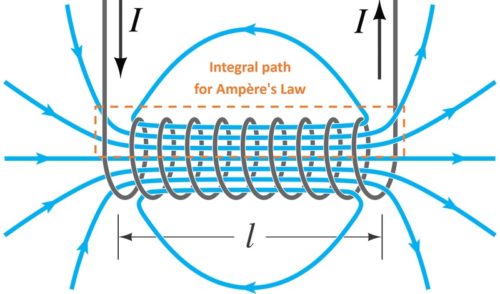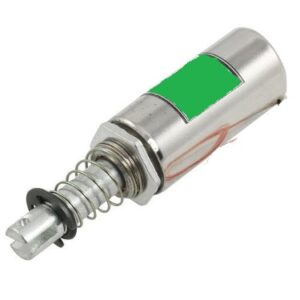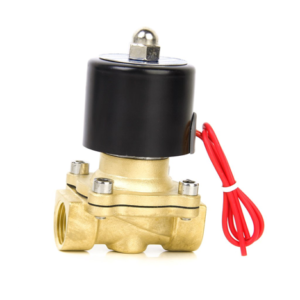
Solenoids Explained
- Posted by doEEEt Media Group
- On October 21, 2020
- 1
This article originally published on electronicsforu.com web explains the basic principles and types of solenoids.
Before we dive in deep into the principles of a solenoid, let’s get a basic understanding of what an electromagnet is.
An electric current flowing through a coiled wire creates a magnetic field. When this wire is wound around a ferromagnetic or ferrimagnetic material, a magnet is created known as an electromagnet. Since a magnetic field is produced as long as the current exits in the wire, the subsequent electromagnet has a temporary magnetic effect. When the current decreases to zero, there will be no magnetic effect.
Introduction
Derived from two Greek words: Solen (pipe) and Eidos (coil), the solenoid is a type of an electromagnetic device that converts electrical energy into mechanical energy. It is generally made by tightly wounding wires in a helix shape around a piece of metal. Whenever an electric current passes through it, a magnetic field is created.
As previously stated, the power of the magnetic field depends on the electric current. Therefore, by varying the current as per our need, we can easily magnetise and demagnetise the electromagnet, enabling us to control the magnetic fields for different requirements.
Working Principle
A solenoid works on electromagnetism and electromagnetic force. It consists of a round cylindrical coil that has several numbers of wire turns and a metal rod inside the coil that is free to move. When an electric current is provided to the coil, a magnetic field is generated due to which the metal core or rod inside the coil gets attracted due to towards the direction where the magnetic flux is high. This electromagnetic effect in a solenoid enables any connected plunger or armature to move as per our need.
In this way, we can control the magnetic field of a coil by controlling and in turn use it for controlling the mechanical movement of metalcore.
The formula for the magnetic field in a solenoid is:
B=µIN/L
Turns density, n= N/L (Number of turns per unit length)
where,
- B= Magnetic field
- µ= Permeability
- N = number of turns
- I = current of coil
- L= length of coil
So from this formula, we can see that to increase the magnetic force produced in a solenoid coil, we will have to increase the number of turns, N and the current, I.
Types Of Solenoid
AC Laminated Solenoid
It has a very high initial attracting force and a very short closing time. It is made with a laminated metal or insulated thin sheets that are individual, assembled.
DC-C Frame Solenoid
As its name states, this solenoid is constructed in such a way that it has a letter ‘C’ like frame cover around the coil. This type is widely used in gaming machines.
DC-D Frame Solenoid
As its name says, this solenoid has a coil that is covered by two ‘D’ frames on two sides. This type is generally used in AC power applications.
Rotary Solenoid
It is a special type of solenoid where the magnetic force is converted into a rotational force or a rotary motion. It consists of an armature core mounted on a flat disk.
When a current is provided, the armature gets attracted towards the stator and the flat disk rotates.
Applications
Solenoid Valve
The solenoid valve is a simple device in which a solenoid is used for controlling and regulating the flow of fluid. It has a coil with a free movable plunger or an iron rod with a spring inside it. When we energise the coil, the plunger moves from its position due to magnetic attraction and when we cut the power to the coil, the plunger comes back to its original position with the help of a spring. As soon as the plunger comes in the path of the flowing fluid, its flow stops.
Solenoid Lock
Here we use the movement of solenoid plunger for the locking and unlocking mechanism. These solenoid locks are widely used in electronic and biometric password-based locks. It consists of a strong metal plunger that can move. When the coil gets magnetised due to an electric field, the plunger moves to perform the lock and unlock mechanism.
Source: Electronicsforu
- Space-Grade components available for immediate delivery - April 10, 2025
- Exclusive stock on doEEEt: How to access and request - April 10, 2025
- Managing EEE components for LEO and lower cost space missions - December 17, 2024







1 comments on Solenoids Explained
That was very informative! The principal application of a solenoid is that of a power switch that is used in valves, inductors, etc. It has a wide range of applications in industrial, medical, home appliances, irrigation networks, and more. Solenoid valves act as control units that cut off or allow the fluid flow when electrically energized or de-powered.